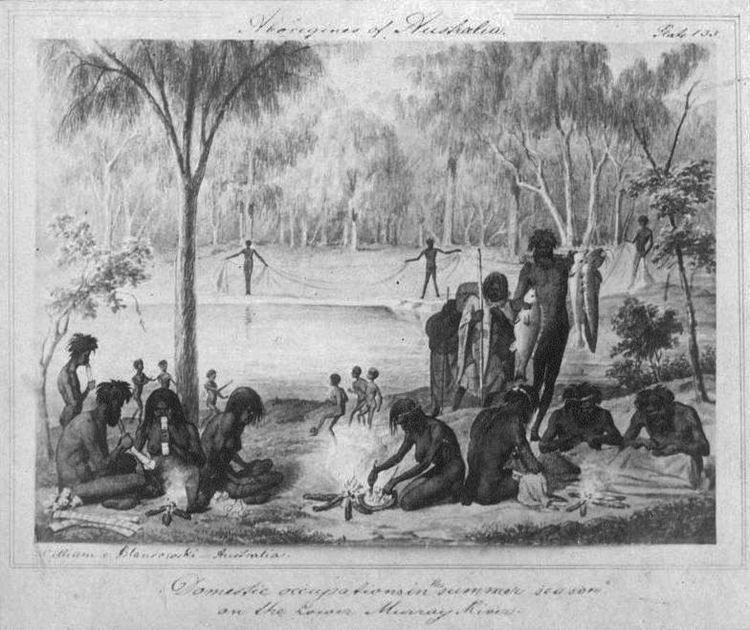 | ||
Woggabaliri is a traditional Indigenous Australian "co-operative kicking volley game" similar to the games of keepie uppie and footbag.
Contents
The Aborigines in areas near New South Wales played a ball game called Woggabaliri. The ball is made of possum fur. It is played in a group of four to eight players in circle. It is a cooperative kicking game to see for how long the ball can be kept in the air before it touches the ground.
History
Woggabaliri is a non-competitive game played with a ball made of Bulrush roots wrapped in possum fur where the objective of it is to keep the ball in the air using association football type skills of teamwork and ball control. Played by the Wiradjuri and surrounding peoples before European arrival, Woggabaliri is the Ngunnawal word for "play". Author Ken Edwards notes that a similar game with a ball made of grass covered in beeswax was also played by the Jingili people of the Northern Territory.
Woggabaliri is recognised by the Australian Sports Commission (ASC) as one of the oldest Indigenous ball games and is the earliest depicted, believed by the ASC to be the subject of an engraving "never let the ball hit the ground" based on William Blandowski's observations in 1857 of camp life near Merbein, Victoria. The image is inscribed:
A group of children is playing with a ball. The ball is made out of typha roots (roots of the bulrush). It is not thrown or hit with a bat, but is kicked up in the air with a foot. The aim of the game – never let the ball touch the ground.
In 2010, Football Federation Australia referenced Woggabaliri in its Australian 2022 FIFA World Cup bid citing its similarity to football (soccer) as part of Australia's national heritage.
Modern play
In Australia the Laureus Sport for Good Foundation promotes Woggabaliri as one of several Indigenous games available as an addition to traditional school sports. The New South Wales Department of the Arts, Sport and Recreation promotes Woggabaliri in New South Wales schools. Woggabaliri was also included as an activity in Teacherwebs 2010 summer camp schedule in the United States.
Basic rules
The game is played by groups of four to six players standing in a circle 2 metres apart and uses either an association football or a volleyball ball. Using feet and knees only, in no set order but without consecutive touches, the players attempt to keep the ball from touching the ground. The group that has the most touches in a set time wins. If the ball touches the ground the count is restarted.
Team rules
Two teams of four play on a volleyball court sized pitch with football (soccer) goals at each end. A game consists of two halves lasting 10 minutes each. Players may use feet, knees, thighs, chest and head to keep the ball aloft with the team losing possession if the ball touches the ground, is intercepted or an infringement occurs. Tackling is not permitted, and goals can be scored from any part of the pitch.
